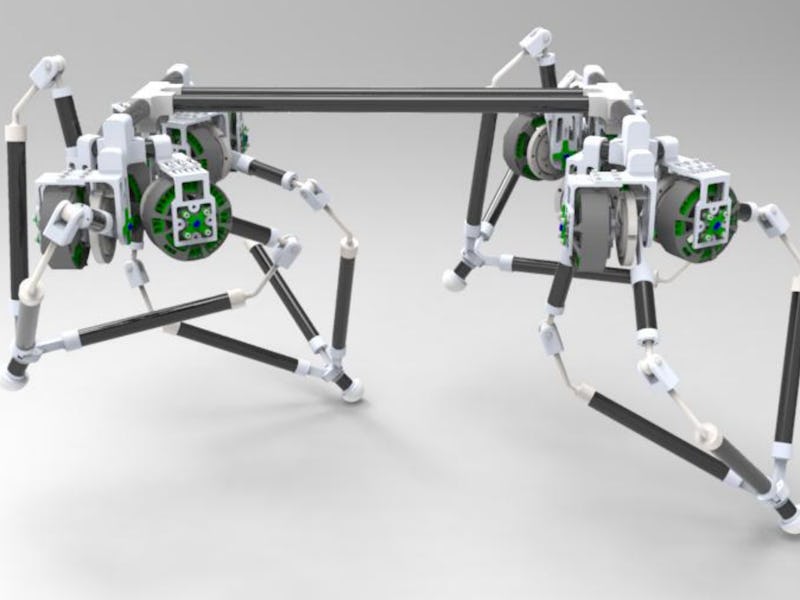Simon Kalouche, a Ph.D. student at Carnegie Mellon University, just designed a robot appendage that can jump 32 inches into the air on its own and flail around in vague running motions. If combined with three other such appendages, the robot conglomerate would be able to run and jump all over the place.
Kalouche made one GOAT leg — Gearless Omni-directional Acceleration-vectoring Topology — for his thesis, and hopes to make more legs so as to compare the full GOAT’s performance with other high-jumping and fast-running robots. The fact that this robot leg is inorganic, or not inspired by nature, means that a quadruped “will most likely behave unlike any other legged robots or legged animals,” Kalouche writes.
Thirty-two inches is quite an achievement for this robot: It’s more than two times the robot’s own height. Maybe Kalouche, taking inspiration not from nature but from mathematics, is ahead of the curve. His motivation to build GOAT was to build a truly mobile, dextrous robot. An “ideal robot,” he writes, should be able to climb, walk, and crawl — but should also be able to leap, land, and run. Only if a robot can do all these maneuvers can it “optimally traverse” any and all terrain that it might encounter. And only if it can so optimally traverse all terrain will it be able to take over the world — or, more innocently, explore Mars.
Such robots would also be adept rescuers, capable of overcoming flaming obstacles and exploring the otherwise unexplorable. “For these situations,” he writes, “dynamic jumping, controlled inertial re-orientation during flight, and compliant landing would allow the robot to traverse the otherwise insurmountable obstacle and continue forward with its mission.”
Kalouche’s GOAT leg does just that: It can dodge, duck, dip, dive, and dodge again. Or, more accurately, it can run, walk, jump, land, and hop.
Check out Kalouche demonstrating his GOAT leg and see for yourself:
